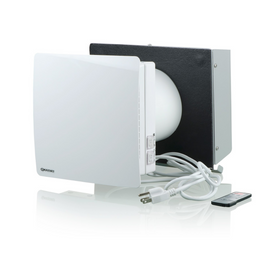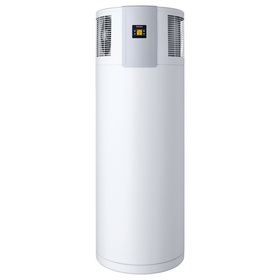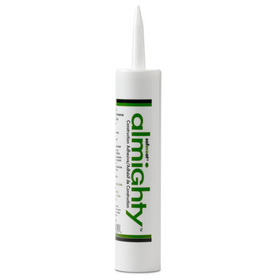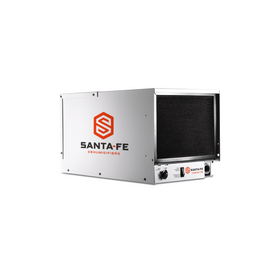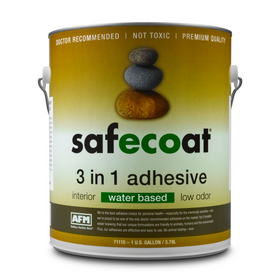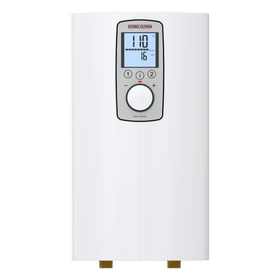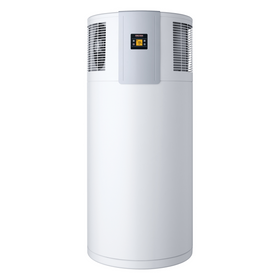
Exterior Doors: What is the Best Material?
Last Updated: Mar 28, 2025As a child, most of us probably learned in school to not “judge a book by its cover.” Of course, when browsing through a library or a used book store, most of us probably skip over those dusty, plain covers as our eyes and imagination are naturally attracted to the bright colors and imagery of better-designed covers. Similarly, the front door to the homes we live in is often the focal point for the structure's overall aesthetic quality.
The exterior doors of our house also play an essential role in keeping our homes safe and secure. The material and construction quality of the exterior doors also affect our structures' energy efficiency and thermal performance. Choosing the best outer door material is an oft-overlooked decision by homeowners. Below, we offer a rundown on the pros and cons of a few of the most common exterior door materials to help you find a “cover” for your home that is beautiful, functional, and an expression of what guests can see once they cross the threshold.
Table of Contents
- The Aesthetic Importance of Exterior Doors
- What Is The Best Material For Exterior Doors?
- What Are Wood Doors?
- What Are Fiberglass Doors?
- What are Steel Doors?
- What Are All Glass Doors?
- How Much Do Exterior Doors Cost?
- Is It Expensive To Change The Glass In An Exterior Door?

The Aesthetic Importance of Exterior Doors
According to Bob Wilcox and Jerome Markson, editors of a beautiful photography book of over 500 front doors from around the world, “for anyone interested in architecture, history, travel or world cultures, doors have a special fascination. In addition to welcoming guests and keeping out intruders, a door creates the first impression of a building and provides a sense of welcome, security, and peace.”
A building’s exterior doors act as a barrier between the reality of what lies inside and our imaginations. A child sent to the principal’s office for bad behavior will often see the principal’s door as an ominous sign of punishment to come. Comparably, the weathered, wooden door of a farmhouse in the countryside perhaps brings to mind imaginings of hospitality, warmth, and frugal goodness.
In this sense, the exterior doors act as a portal between the public and private.
They bring a sense of mystery while also offering a first glimpse or initial impression of the character, style, and personality of those who live within the walls. A simple wooden door shrouded in flowers and vines perhaps lets people know that they are walking into the home of an avid gardener. A sleek, modernist, and minimalist design to a front door can similarly reveal the defining elements of the homeowners' nature and the home itself.
What Is The Best Material For Exterior Doors?
The aesthetic importance of exterior doors is undoubtedly crucial for several reasons. However, a front door should also not compromise the energy efficiency of your home. Wood, steel, fiberglass, and glass doors are the most common materials for exterior doors. All of these options offer particular advantages and drawbacks, which we will detail below.

What Are Wood Doors?
Wooden doors for a home's exterior are one of the most popular options because they can be customized with decorative glass accents, unique door knockers, and other aesthetic and functional details. As a completely natural material, wooden doors also combine beautifully with a wide variety of different exterior cladding options, especially natural facades such as stone, brick, or wood.
Another advantage of opting for wooden doors is their inherent insulating properties. A solid core, exterior wood door with a one ¾ inch thickness would have an R-Value of just over three. The thicker the door, of course, the higher the R-value. However, it is essential to differentiate between solid core doors and doors made from manufactured wood products.
Solid core doors, as their name implies, are made from solid slabs of wood. These doors are usually made from two pieces of manufactured wood that are sandwiched around some insulating material to improve the door's thermal performance. On the other hand, manufactured doors stem from different types of plywood or other manufactured wood materials. Manufactured wood doors are generally not recommended for exteriors as they are prone to water damage.
On the downside, solid core wooden doors will often be some of the most expensive options on the market. The higher price is especially true for wooden doors made from rare and exotic hardwoods. Wooden doors can tend to warp due to exposure to moisture present in the outside air. In extreme cases, homeowners might be forced to replace the door if warping compromises the tightness of the building envelope.

What Are Fiberglass Doors?
Fiberglass doors are unique in that they can be made to look exactly like a wooden door through special stains and coloring. These doors are generally more durable and are not prone to warping due to exposure to the elements. Fiberglass doors are less susceptible to small dents and knocks that are common with steel doors.
Because fiberglass doors have virtually zero insulation properties, these doors come with an insulated core jammed between two fiberglass sides. The U.S. Department of Energy states that “the R-values of most steel and fiberglass-clad entry doors range from R-5 to R-6, excluding a window. For example, a 1-1/2 inch (3.81 cm) thick door without a window offers more than five times the insulating value of a solid wood door of the same size.”
On the downside, fiberglass doors will tend to be more expensive than some solid core wooden doors.
Fiberglass doors can be difficult to trim. Also, even though they can be painted to look like wood, they are generally less customizable than wooden doors. Homes that do not have standard-size door entryways will most likely not opt for fiberglass doors.

What are Steel Doors?
Steel doors offer a durable entryway to your home that also comes with added safety measures. Steel doors are usually considered to provide the best protection against intrusions and burglaries. These types of doors come with an insulated foam core sandwiched around steel panels on both sides. They also offer security and shelter from strong winds. On the downside, steel doors are prone to dents and can be very hard to repair.
The other thing to consider is that steel doors don’t always have a thermal break. That means that a steel door could contribute to making your house hotter in the summer and colder in the winter because of steel's thermal conductivity.

What Are All Glass Doors?
Glass inserts can be added to any of the door materials mentioned above. A solid glass front door is also an option for homeowners who want to maximize natural lighting and outdoor views. This type of door doesn’t offer much in the way of privacy. Still, it can be a good option for homes in rural areas that want to experiment with biophilic architectural design and improve their view into the woods in their backyard. To maximize the energy efficiency of an all-glass door, homeowners should opt for triple-pane glass doors filled with argon gas.
How Much Do Exterior Doors Cost?
The cost of exterior doors will depend on several factors, including the design, materials, and quality of construction. In general, however, homeowners can expect to pay the following:
- Wooden doors: Solid core wooden doors start at around $200, though customized and thicker wooden doors will cost significantly more. If you opt for exotic hardwoods, you can expect to pay in the thousands.
- Fiberglass doors: These doors also have a wide price range, costing anywhere from $150 to $2,000. Design, additions, and R-value of the foam interiors will all affect the final price.
- Steel doors: According to one estimate, “the cost of a standard steel (door) typically ranges between $150 and $300. Add glass, and that cost increases to $300 to $1,200.”
- All Glass Doors: All-glass doors tend to be the most expensive option, especially when made from high-quality, triple-pane glass. These types of doors can easily cost around $2,000 or more.
- (Bonus) Passive House Doors: Regarded as the most energy-efficient doors on the market, they're typically finished in wood or fiberglass, have high insulation value, and can have a triple-pane glass insert. These doors typically sell between $3,000 to $8,000.
Is It Expensive To Change The Glass In An Exterior Door?
For homeowners who want to maximize natural light infiltration into their home, adding glass insets into wooden, steel, or fiberglass doors is a great option. Pieces of strategically placed glass enhance the aesthetic qualities of the door without compromising energy efficiency and thermal performance. Some homeowners, however, might worry that a carelessly thrown baseball or strong gust of wind could damage that glass insert leading to costly repairs.
Fortunately, replacing glass insets is relatively inexpensive, depending on the size and the type of door material. In general, most homeowners pay between $165 and $374 to replace window glass, though that cost could increase with double or triple-pane glass insets.
Solid core wood, steel, fiberglass, and all-glass doors all offer specific advantages and drawbacks.
In the end, choosing the best type of material for your exterior door will depend on how much you value energy efficiency balanced with your esthetic preference for the character of your home.
Tobias Roberts
Tobias runs an agroecology farm and a natural building collective in the mountains of El Salvador. He specializes in earthen construction methods and uses permaculture design methods to integrate structures into the sustainability of the landscape.

